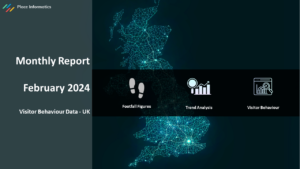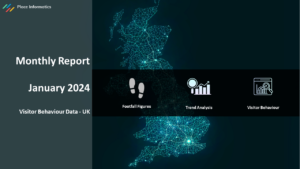Christmas markets are a staple of the holiday season, providing not only a festive atmosphere but serve as vital economic stimulators for local UK economies. However, market planners and local councils often grapple with the logistical challenges of organising events that are both financially successful and well received. Enter retail analytics—offering a systematic approach to improving market performance and profitability.
Retail analytics involves the detailed analysis of customer movement analysis, and purchasing patterns and visitor demographics. For Christmas markets, this means utilising data to understand which products sell, which stalls attract the most visitors, and what activities drive engagement. By analysing data from past events, neighbouring boroughs and current market trends, planners can make evidence-based decisions that enhance the market’s appeal and profitability.
Understanding Consumer Demographics and Postcode Origins
Demographic analysis is a critical component of retail analytics. Retail analytics provides granular details about the consumer population, such as age distribution, social grades, and home origins. With this information on-hand, local councils can ensure that the festive offerings resonate with the community, leading to better engagement, extended dwell times and ultimately spending. For example, a high concentration of families might appreciate stalls with child-friendly activities or products, while an area with younger couples might be more drawn to trending food and drink offerings.
According to Nick Gladding, Lead Retail Analyst at GlobalData, “Sharply higher prices mean shoppers will spend less in real terms than last year, choosing either to trade down or trim the number of presents they buy”. Higher interest rates, the accelerating cost of living, and a slump in consumer confidence all point to a decline in retail sales for this year’s festive season. As consumers spend cautiously, utilising and understanding data to tailor markets effectively is imperative to retailers looking to encourage spending this season.
Optimising Stall Placement and Layout
The strategic placement of stalls can significantly influence a market’s flow and revenue. Through retail analytics, planners can utilise heat maps generated by GPS footfall data to determine the most strategic stall placements. An optimised layout not only improves the shopping experience but creates a layout that encourages maximum engagement and minimum congestion.
Understanding where visitors frequent helps with logistical arrangements such as parking, public transportation, and the positioning of entrances and exits to the market. With this information available during the planning process, councils can allocate resources confidently and efficiently. For instance, they might invest more in lighting and security in the areas where the most valuable customers are predicted.
Data-Driven Marketing Strategies
By analysing past consumer behaviour and footfall data, organisers can identify which marketing channels and messages are most effective, driving targeted campaigns that ensure promotional spending yields the highest possible return on investment.
Customer journey mapping highlights the paths that customers are most likely to take through the market. This information can be used to place promotional messaging in strategic locations, ensuring they are seen by the correct audiences.
By comparing footfall data before, during, and after specific marketing campaigns, organisers can measure the direct impact of their marketing efforts on visitor numbers. Understanding which marketing strategies correlated with increased foot traffic can inform decisions for future marketing investments and allows for the refining of marketing strategies, based on empirical evidence of what works, for current and future events.
As technology continues to evolve, future trends may include the integration of advanced predictive models, real-time analytics, and even deeper machine learning algorithms to provide actionable insights on market performance. It’s an exciting time, and such tools will further empower local councils and organisers to make data-driven decisions, redefining the traditional Christmas market as we know it.
The integration of retail analytics into the planning of Christmas markets offers a pathway to increased efficiency and profitability. Local councils and market organisers that choose to embrace this analytical approach can better cater to the needs of their community, ensuring the success and longevity of their festive markets. To learn how customer behaviours can shape your decision making for retail footfall growth, better customer engagement, sales and profitability, reach out to our team today at 0161 706 1343 or email us at info@placeinformatics.com.






